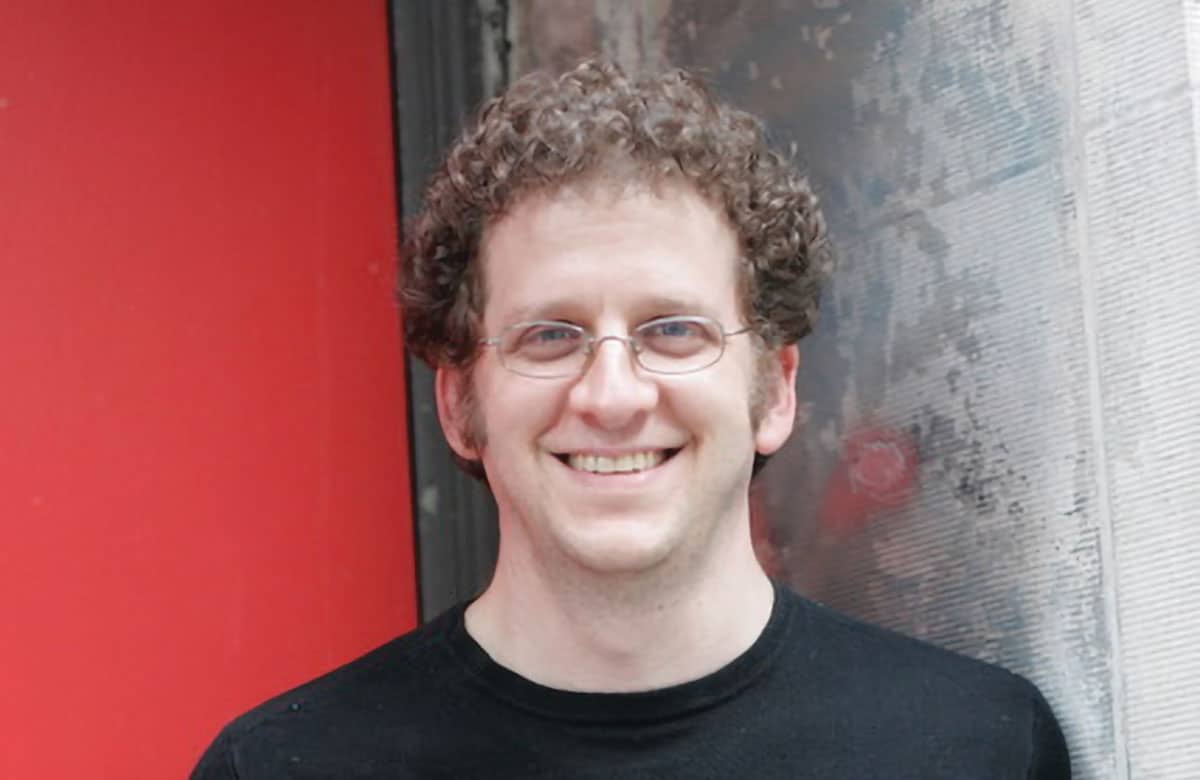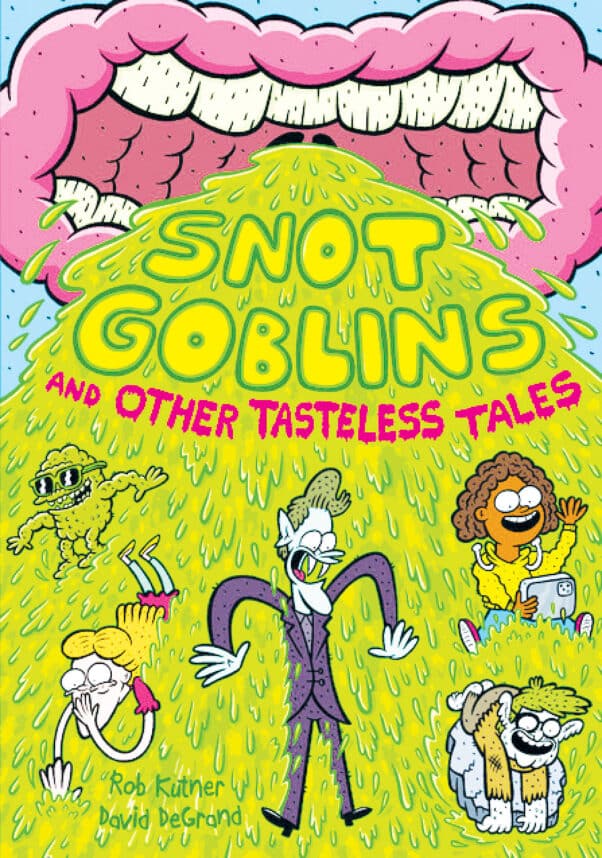 Photo by Lee Miller
Photo by Lee Miller “Snot Goblins: and Other Tasteless Tales” is not your typical gross-out graphic novel. For one thing, it’s filled with humor and history.
“‘Deep gross’ is the spot we carved out for ourselves,” Rob Kutner, author and five-time Emmy-winning writer, told the Journal. “They’re all plays on horror tropes with a comedic angle and a heavy emphasis on disgusting substances wherever possible; juvenile humor.”
He added, “We wanted it to be the book that teachers will be horrified by, but the cool librarians will slip to the smart kids.”
 Written by Kutner and illustrated by David DeGrand, “Snot Goblins” features five gross tales that are kids’ stories (ages 8 – 12) with nuances that will engage adults.
Written by Kutner and illustrated by David DeGrand, “Snot Goblins” features five gross tales that are kids’ stories (ages 8 – 12) with nuances that will engage adults.
“In TV they call it co-viewing,” he said.
The adults will either want to read it alongside their kids or the kids will reference things in the book and pique the parents’ curiosity.
“I approached it with, ‘Don’t underestimate kids; reach a little bit above them, but not too far that they can’t follow,’” he said.
The title story “Snot Goblins” is about a race of snot that are like demons.
“This boy gets out of school because he is ‘sick’ and then his booger gets loose,” Kutner said. “He realizes there’s much darker forces at work, so he and the kids take charge and fight the snot goblins.”
“The Bleeding Heart Vampire” is an immigration story. A turn-of-the-century vampire, who doesn’t like to kill people, is a disappointment to his family. So he travels from a small town in Romania to America.
“I thought about our immigrants who left the Old World for the New World, and just reinvented themselves,” Kutner said.
The vampire ends up on the Lower East Side in New York.
“There’s lots of Jews, there’s lots of kosher butchers, so he gets a night job sucking the blood out of meat to make sure that it’s kosher, [that] it has no blood in it,” Kutner said. “It’s sort of a compromise job for him.”
Kutner also took the opportunity to take his character on a whirlwind trip through early 20th-century history. In one instance, he crosses paths with Thomas Edison and Bonnie and Clyde.
The story is about “a nerdy vampire who uses science and technology at a weird time to figure out how to get blood,” Kutner said. “But also he’s discovering the world.”
Growing up, Kutner learned things “sideways” through parodies like Mad Magazine, and wanted to do the same for his readers.
“I wanted to introduce kids [to history] without trying to be a textbook,” he said. “With some of the other stories, I did this with culture, religion, etc,”
“The Stepmummy” is about a blended family where a dad marries a 2,000-year-old mummy.
“Hatshepsut was a real Pharaoh who was a great leader [and] overlooked in history because she was a woman,” he said. It’s told from the point of view of the tween daughter, who also gets a disgusting stepbrother in the union.
“It’s a lot of Egyptology with an emphasis on real life gross stuff,” he said.
“Troll Versus Troll” is about the cave trolls who live underground going to war with Internet trolls, and “Whooo’s There?” is about two tween girls who are ghost hunters with their own YouTube channel, investigating a haunted Psychiatric Hospital. “The tables get turned on them in terms of who becomes the hunter and who becomes the hunted,” Kutner said.
All of the stories take place in the same vague universe.
“If you look carefully, you’ll see there’s elements from other stories inside each one,” he said. “It takes place all in the same world, even though they’re not explicitly interacting.”
Kutner, who lives in L.A. with his wife Sheryl Zohn and their two kids, grew up in Atlanta, Georgia.
“I became Jewish by going to a Christian school,” Kutner said. “And that made me a weird rebel with an outsider perspective that was an even more enhanced Jewish outsider perspective than the typical one.”
“I became Jewish by going to a Christian school. And that made me a weird rebel with an outsider perspective.“
Kutner, whose family was Reform, attended a private Presbyterian school, starting with pre-school.
“My parents are pretty active in terms of Jewish community involvement,” he said.
Kutner got more involved in Jewish observance around junior high. Some of his Christian peers became evangelical and started “witnessing” everyone around them. Their questions led to Kutner exploring his roots. He went on a summer program in Israel in high school and came back wanting to keep kosher and observe shabbat.
He has gone from Reform to Conservative, and spent a year studying at the Pardes Institute in Jerusalem. “It is a very traditional, but also egalitarian, yeshiva,” he said. “And that got me on kind of a Jewish living path.”
Kutner described the main line prep school he attended in the conservative South as almost an authoritarian structure, one that prepared him in ways they never could have imagined.
“And just as those Ivan Reitman movies – “Ghostbusters” and “Animal House” – are all about upending the very stuffy things, I had that vibe. I was the heckler who saw everything was funny.”
This perspective has served him well.
Kutner, whose TV credits include “The Daily Show,” “Conan” and “Teen Titans Go!”, has also written the humor books “Apocalypse How,” “The Future According to Me” and the graphic novel “Shrinkage.” He also ghost-wrote the upcoming MCU Scott Lang “memoir” from the movie “Ant-Man & the Wasp 3.”
Kutner and DeGrand (who was an illustrator for the Mad Magazine reboot a few years ago) had previously collaborated on cartoons. When publishers asked DeGrand if he had ideas for graphic novels, he mentioned Kutner, since they worked so well together.
Three years ago, Rob Kutner and David DeGrand set out to write a book of stories about really gross things.
“Snot Goblins” comes out on July 25.























 More news and opinions than at a Shabbat dinner, right in your inbox.
More news and opinions than at a Shabbat dinner, right in your inbox.